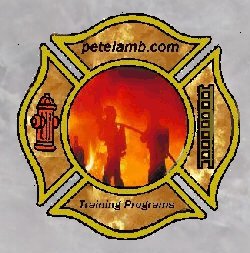 Training
Bulletin
Training
Bulletin Training
Bulletin
Training
BulletinIt is not the intent that these pages be a complete lesson plan, but merely thought provoking so that you can manage your own drill.
|
Some Foam Thoughts For this week I have not given you the entire solution to the foam issue but merely some thoughts and considerations. Today foam technology is changing so fast that many people do not know where to look or even what the basics are. Some simple premises have not changed at all and they are the rules of proper application rate. In many ways foam is like water application, in that there is not a total amount that matters, but really the rate of application. Let's talk about some issues in no particular order, but you should go back to your individual departments and prepare a drill to make sure all members are familiar with what is going on. Class A Foam Class A foam is becoming more widely used and the premise using class A is that percentages are extremely low in general compared to the folks who remember using 6% class B foam. Class A percentages can be used by injection and induction in rates of like 1/2 % (one half of one percent). Class A foam can also be premised and batch mixed at the scene in folding tanks and water tanks. While this is not recommended it can in fact be done. The other issue with Class A foam today is CAFS. That is compressed air foam systems. There are many departments that are using these systems to premix air with foam solution in the hoseline so that the hoseline actually has compressed air in in with a thickened foam solution. This type of application was started with the forestry service as an answer to exposure protection. Units would deliver a thick blanket of foam ahead of a wildfire and then move along. This allowed companies to maximize the water usage on small highly mobile brush units. Class B Foam With the advent of higher blending of ethanol in gasoline, with the hope of getting to 85% as in E85 fuel, the use of class B foam is changing as well. Most foams now are capable of working with polar solvents like ethanol. If you are still using an older "standard" foam, then check with your manufacturer and you may find out that it can be used if you double your percentage rate. That is use 3% foam at 6%. This should be checked with whoever your distributor is. Class B standard foam application will generally fail for a couple of reasons that arise most often. If we look at the reasons for failure we might be able to train to be sure we are correcting them.
There are a couple of folks who have published books and articles on the subject and while I generally will not recommend and specific products or services here, I would direct you to the following folks for further information: For Class B Foam contact Jim Cottrell from this link at the TFT website. For Class A Foam Information you should be in contact with a gentleman by the name of Domenic Colletti who has authored the most informative guide on foam operations. Some foam reference books can be found by clicking here. |
![]()
![]()